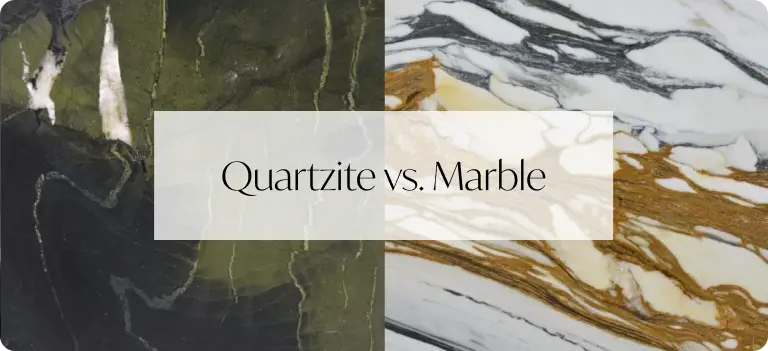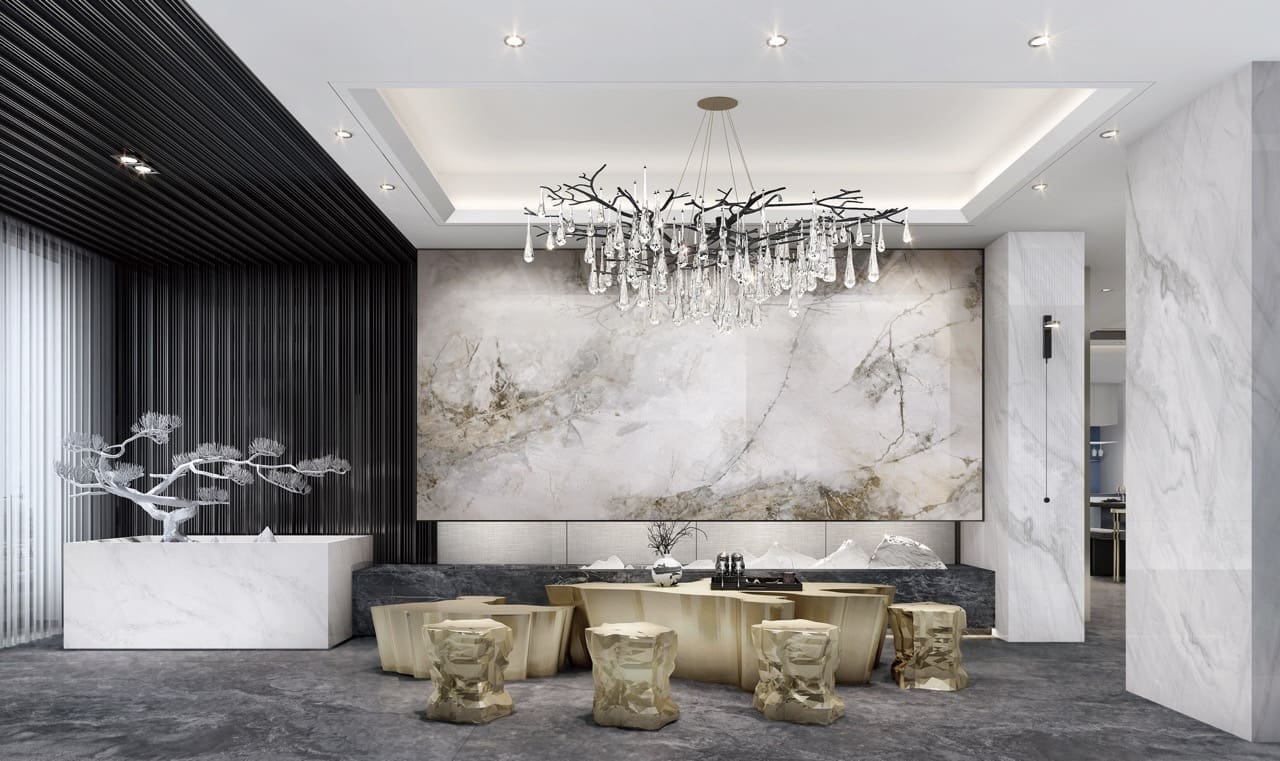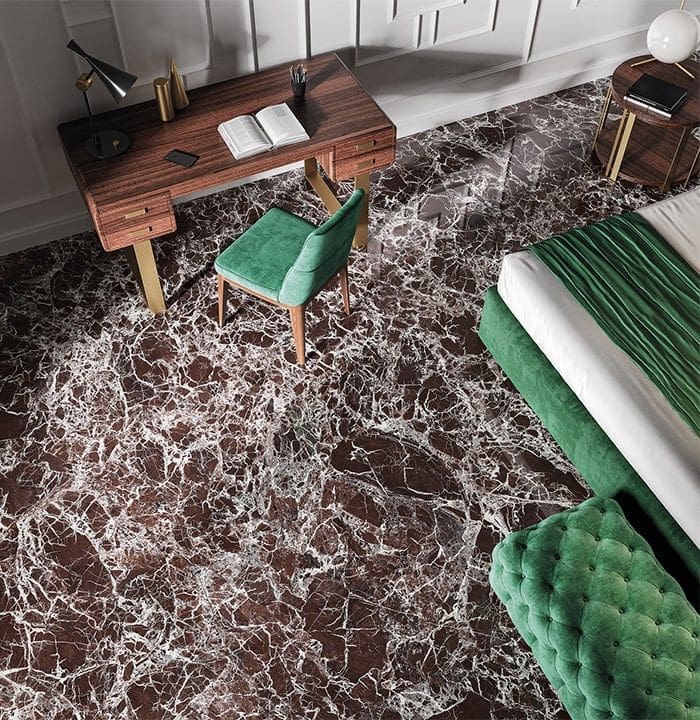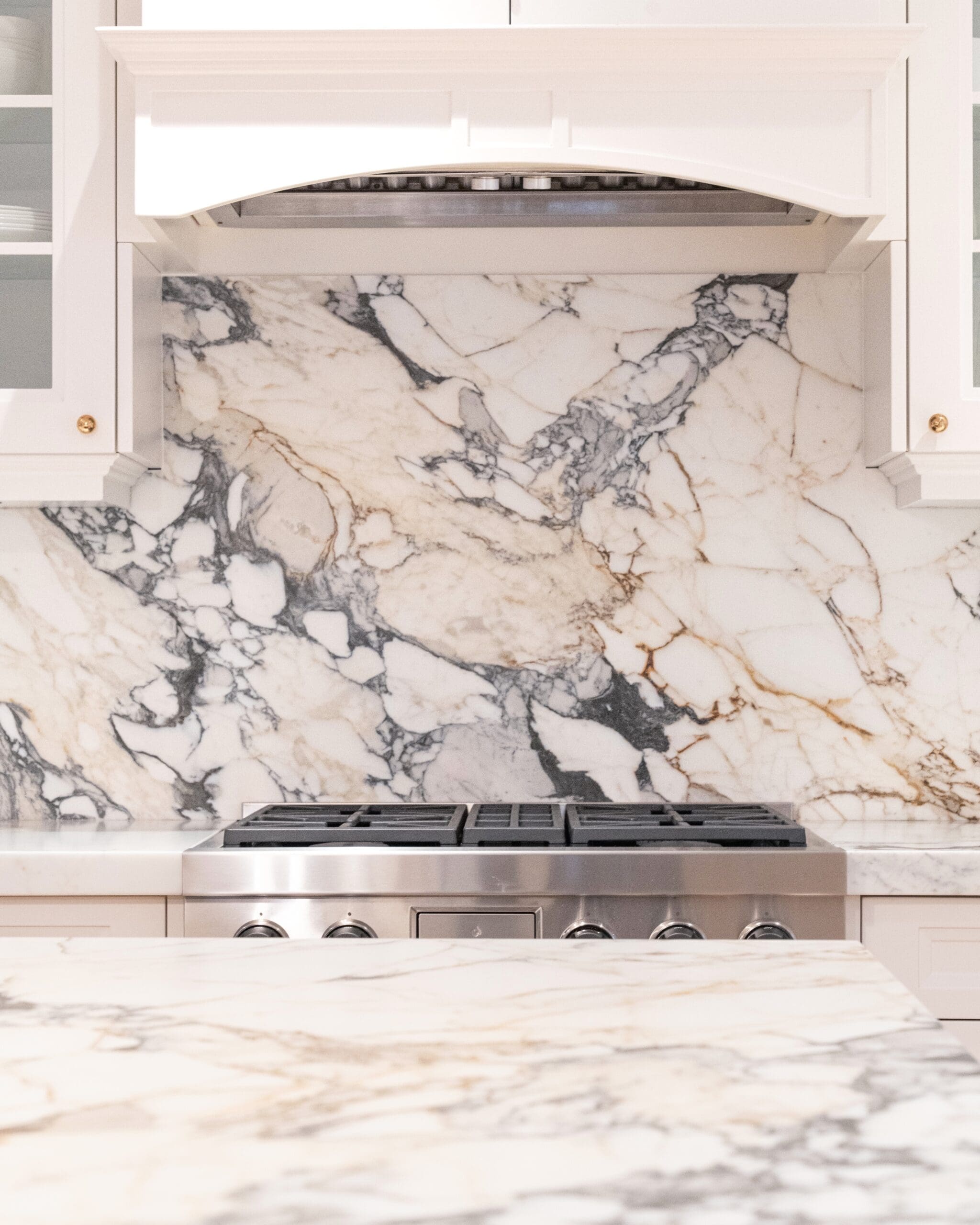Natural stone is a popular choice for homeowners and designers, offering timeless beauty and luxury. When selecting the perfect stone for your project, quartzite and marble are top contenders. Both offer stunning aesthetics but differ in durability, maintenance, and ideal applications. This comprehensive guide explores quartzite vs. marble, covering key differences, pros and cons, costs, and best uses, including suitability for kitchens, to help you make an informed decision for your dream home.
What is Quartzite: Origin and Composition?

Quartzite is a metamorphic rock that originates from sandstone and quartz. Through intense heat and pressure, the quartz grains fuse together, forming a dense and compact stone. Quartzite is a natural stone that is composed primarily of quartz, with small amounts of other minerals such as feldspar, mica, and iron oxide. It is known for its exceptional strength, durability, and resistance to heat and scratches.
Quartzite Formation and Composition
Quartzite forms when sandstone and quartz are subjected to high pressure and temperature over millions of years. This process causes the quartz grains to recrystallize, forming a new stone with unique patterns and colors. The composition of quartzite varies depending on the source, but it is generally made up of 90-95% quartz, with the remaining 5-10% consisting of other minerals.
Quartzite’s Appearance and Color
Quartzite is known for its glassy, lustrous appearance. It often comes in shades of white and gray, but can also be found in a variety of colors due to the presence of other minerals. Its natural patterns and variations make it a favorite for those seeking a distinctive look.
Quartzite’s Common Uses in Home Design
Quartzite is a popular choice for countertops, flooring, and wall coverings. Its durability makes it suitable for high-traffic areas and its natural beauty adds elegance to any space.
Quartzite is especially favored for outdoor applications due to its resistance to weathering and fading. Its hardness and ability to withstand high temperatures make it ideal for outdoor kitchens and barbecue areas. Additionally, it can be used for accent walls, providing a striking visual effect that enhances both interior and exterior designs.
Discover the beauty and durability of quartzite for your next project. Check out our quartzite collection!
Interested in exploring our range of quartzite and marble? Visit our showroom or contact us today!
What is Marble: Origin and Composition?

Marble is a metamorphic rock that originates from limestone or dolostone. Through the process of metamorphism, the limestone or dolostone is transformed into a new stone with unique veining patterns and colors. Marble is a natural stone that is composed primarily of calcium carbonate (limestone) or magnesium carbonate (dolostone). It is known for its distinctive veining patterns, elegance, and sophistication.
Marble Formation and Composition
Marble forms when limestone or dolostone is subjected to high pressure and temperature over millions of years. This process causes the minerals to recrystallize, forming a new stone with unique patterns and colors. The composition of marble varies depending on the source, but it is generally made up of 95-99% calcium carbonate or magnesium carbonate, with the remaining 1-5% consisting of other minerals.
Marble’s Appearance and Color Variations
Marble is prized for its classic beauty and is often found in shades of white, gray, and black, though it can also come in other colors. The veining patterns, created by mineral impurities, add to its aesthetic appeal.
Marble’s Common Uses in Home Design
Marble is commonly used for countertops, flooring, and bathroom vanities. Its luxurious appearance makes it a preferred choice for high-end residential and commercial projects.
Marble is also widely used in artistic and architectural applications. Sculptors have favored marble for centuries due to its workability and smooth finish. Iconic structures like the Taj Mahal and Michelangelo’s David showcase the timeless beauty of marble. In home design, marble is often used for fireplaces, staircases, and even intricate inlays that add a touch of sophistication.
Elevate your home design with our exquisite marble options. Explore our marble products today!
Quartzite vs. Marble: Key Differences
| Aspect | Quartzite | Marble |
| Durability and Hardness | Quartzite is one of the hardest natural stones, ranking around 7 on the Mohs hardness scale. It is highly resistant to scratches and ideal for areas with heavy use. | Marble is softer, ranking around 3-5 on the Mohs scale, making it more prone to scratches and etching. It is better suited for areas with lighter use to prevent damage. |
| Porosity and Staining | Quartzite is less porous than marble, making it more resistant to staining. It repels liquids effectively, reducing the risk of permanent stains. | Marble is more porous and susceptible to stains from spills, especially acidic substances like wine and citrus. It requires more frequent sealing and immediate cleaning of spills. |
| Maintenance Requirements | Quartzite requires less maintenance compared to marble. Sealing is still necessary to protect against stains, but it is less frequent. Regular maintenance involves wiping with a damp cloth and mild soap. | Marble needs more frequent sealing and careful cleaning with pH-neutral cleaners and a soft cloth. Annual sealing is recommended, but its higher maintenance needs often lead homeowners to consider its placement carefully. |
Best Uses/Applications for Quartzite and Marble

Best Uses for Quartzite
- Kitchen Countertops and Islands: Ideal due to its heat resistance and durability.
- Outdoor Kitchens and Barbecues: Resistant to weathering and high temperatures.
- Outdoor Patios and Walkways: Resistant to wear and tear
- Flooring: Perfect for high-traffic areas due to its hardness.
- Accent Walls: Provides a striking visual effect both indoors and outdoors.
- Bathroom Vanities: Combines durability with aesthetic appeal.
Quartzite’s versatility makes it suitable for various applications, from kitchen countertops to outdoor spaces. Its resistance to wear and tear ensures longevity, while its unique patterns add visual interest to any setting.
Transform your spaces with durable and beautiful quartzite. Shop our quartzite range now!
Best Uses for Marble
- Luxury Kitchen Countertops and Islands
- Bathroom Vanities and Sinks: Adds a touch of luxury and elegance.
- Fireplace Surrounds and Walls: Creates a sophisticated focal point in living spaces.
- Staircases: Enhances the grandeur of entrance halls and stairways.
- Sculptures and Decorative Pieces: Preferred by artists for its workability and beauty.
- Flooring in Low-Traffic Areas: Suitable for spaces where elegance is prioritized over durability.
Marble’s timeless beauty makes it a top choice for decorative and artistic applications. Its use in less trafficked areas helps preserve its pristine appearance, while its aesthetic appeal enhances the overall design.
Add a touch of luxury to your home with our premium marble. See our marble selection!
Pros and Cons of Quartzite and Marble
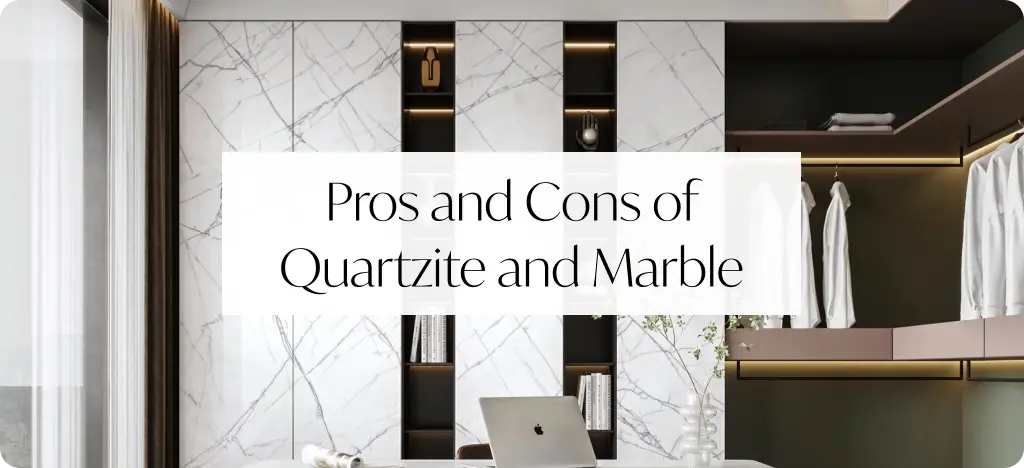
Pros and Cons of Quartzite
Strengths of Quartzite
- Durability: Extremely hard and resistant to scratches.
- Stain Resistance: Less porous, making it more resistant to stains.
- Heat Resistance: Can withstand high temperatures, making it ideal for kitchen countertops.
- Unique Appearance: Each slab is unique with natural patterns and colors.
Potential Drawbacks of Quartzite
- Cost: Generally more expensive than other natural stones.
- Availability: Limited availability can make it harder to find specific colors or patterns.
- Complex Installation: Its hardness makes it more challenging to cut and install.
Quartzite’s strength and beauty come at a price, often higher than other stones. Its availability is also limited, particularly for unique colors and patterns. Installation can be challenging due to its hardness, requiring specialized tools and skilled labor, which can increase overall project costs.
Need expert advice on quartzite installation? Contact our specialists for assistance!
Pros and Cons of Marble
Strengths of Marble
- Aesthetic Appeal: Timeless beauty with unique veining and color variations.
- Versatility: Can be used in various applications, from countertops to sculptures.
- Heat Conduction: Naturally cool to the touch, making it ideal for baking surfaces.
Potential Drawbacks of Marble
- Maintenance: Requires regular sealing and careful cleaning.
- Durability: Softer and more prone to scratches and etching.
- Staining: Highly porous and susceptible to stains, especially from acidic substances.
Marble’s luxurious look and feel are unmatched, making it a favorite for elegant interiors. However, its maintenance needs and susceptibility to damage can be a drawback. Homeowners must weigh the beauty against the upkeep to decide if marble is the right choice for their space.
Explore the elegance of marble for your next project. Consult with our experts today!
Cost Comparison: Quartzite vs Marble

Here’s a table to help you compare:
| Aspect | Quartzite | Marble |
| Initial Purchase Cost | $50 – $170 per square foot | $25 – $200 per square foot |
| Long-Term Maintenance Costs | Lower; periodic sealing and routine cleaning | Higher; frequent sealing and specialized cleaning |
| Value for Money | Better for high-traffic areas; durable | Better for aesthetic appeal; timeless beauty |
| Maintenance Requirements | Less intensive | More intensive |
| Resale Value Appeal | Practical buyers; durability | Luxury-seeking buyers; elegance |
| Best Suited For | High-traffic areas, durability-focused projects | Low-traffic areas, aesthetics-focused projects |
Ready to invest in quality stone for your home? Browse our collection today!
Choosing Between Quartzite vs. Marble Countertops in the Kitchen
Practical Considerations for Kitchen Use
Durability and Maintenance:
- Quartzite: Excellent for busy kitchens due to high durability and heat resistance.
- Marble: Better suited for low-traffic kitchens prioritizing aesthetics over practicality.
Heat Resistance:
- Quartzite: Highly resistant to heat and thermal shock.
- Marble: Heat resistant but prone to thermal shock; requires trivets for hot cookware.
Aesthetic Appeal:
- Quartzite: Unique patterns suit modern and contemporary styles.
- Marble: Classic veining offers timeless elegance, ideal for traditional kitchens.
Design Trend: Mixing both stones (e.g., marble islands with quartzite main countertops) combines beauty and functionality.
Choosing the Right Stone for Your Project

Both quartzite and marble offer unique advantages. Here’s a breakdown to help you make the perfect choice:
Quartzite:
- Ideal for those who prioritize durability and low-maintenance. Its exceptional strength makes it perfect for busy households and high-traffic areas.
- The wider range of color options allows for bolder design choices, while still maintaining a touch of elegance.
- Consider quartzite if you envision using the same stone for both indoor and outdoor living spaces.
Marble:
- The perfect choice for those who prioritize timeless elegance and are willing to invest in proper care.
- Marble’s classic beauty adds a touch of sophistication to bathrooms, fireplaces, and low-traffic areas.
- If meticulous maintenance is not a deterrent, marble countertops can be a stunning addition to your kitchen, creating a luxurious and unique focal point.
Conclusion
Quartzite and marble are two popular luxury stones that can elevate the beauty and value of any property. Ultimately, the ideal stone for your project depends on your specific needs and preferences. Consider your lifestyle, the intended use of the space, and the desired aesthetic. Do you prioritize functionality and ease of care, or are you drawn to the timeless elegance of marble and willing to invest in its upkeep? Quartzite offers superior durability and lower maintenance, making it ideal for high-traffic areas and kitchens. Marble is perfect for those seeking a luxurious and elegant look.
Here at Better Marble, our design professionals possess a wealth of knowledge about both quartzite and marble. We understand that selecting the perfect stone can be overwhelming. We encourage you to visit our showroom or schedule a consultation to discuss your project in detail. Our team will guide you through the selection process, ensuring you choose the stone that perfectly complements your vision and lifestyle.
Still unsure which stone is right for you? Visit our showroom or contact us for personalized advice!
FAQ
What is more durable, quartzite or marble?
Quartzite is more durable than marble due to its higher hardness and resistance to scratches.
Is quartzite more expensive than marble?
Generally, quartzite is more expensive than marble, but the cost can vary based on the quality and availability of the stone.
Is quartzite or marble better for kitchen countertops?
Quartzite is generally better for kitchen countertops due to its durability and resistance to heat and scratches.
Can marble be used in kitchens?
Yes, marble can be used in kitchens, but it requires more maintenance and is more prone to scratches and stains compared to quartzite.
How do I clean quartzite and marble?
Regular cleaning with mild detergent and water is recommended for both stones. Avoid using acidic substances or abrasive materials that can damage the surface.
How do you maintain quartzite and marble surfaces?
Both surfaces should be sealed to protect against stains. Quartzite requires less frequent sealing and maintenance than marble, which needs regular sealing and careful cleaning.
Are quartzite and marble suitable for outdoor use?
Yes, both quartzite and marble can be used outdoors, but they require proper sealing and maintenance to withstand the elements.
Can quartzite and marble be used for flooring?
Yes, both quartzite and marble can be used for flooring, but they require proper installation and maintenance to ensure durability and safety.
How much do quartzite and marble cost?
The cost of quartzite and marble varies depending on the quality, size, and color of the stone. Generally, quartzite is more expensive than marble, but the cost of installation, maintenance, and repair should also be considered.
Start your stone selection journey today. Explore our products or get in touch with our experts!

